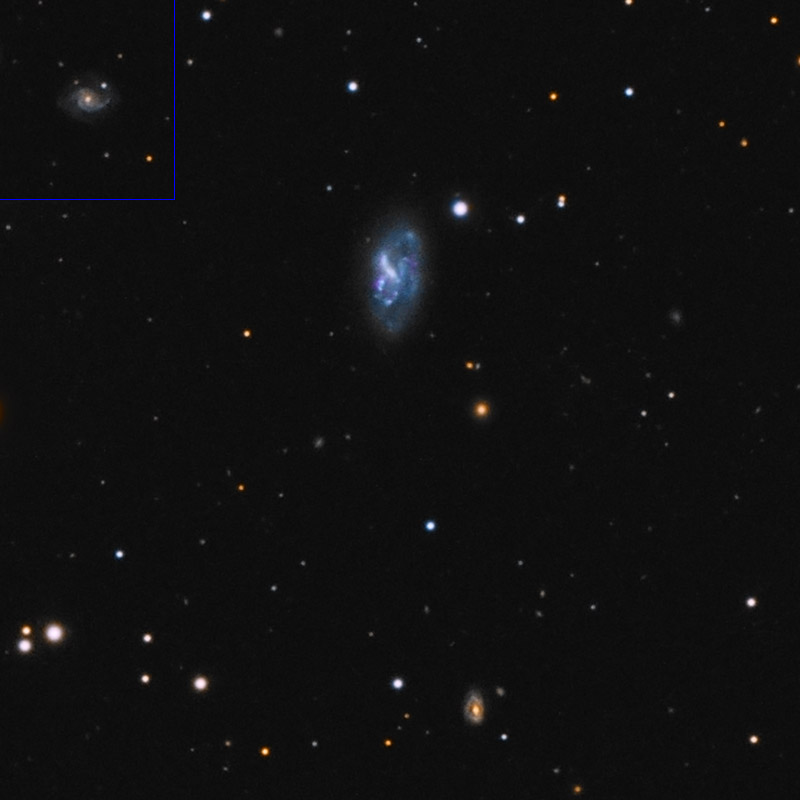| Description | Images |
Object name: NGC5002Designation(s): NGC5002, NGC 5002 is a barred Magellanic galaxy usually considered a member of the NGC 5033 group in Canes Venatici. NED's 5 year WMAP data shows it to be about 61 million light-years distant though a single Tully-Fisher measurement puts it about 40 million light-years distant. That's the distance APOD puts on NGC 5033 so I'll use it rather than the redshift-distance which is likely distorted by its motions in the group. That makes it about 20,000 light-years in diameter, rather typical for a galaxy of its type. I assume the bar is the linear structure. Odd in that it runs from the core to the edge on one side but not the other so is it a half barred galaxy? A loop of star knots runs through the galaxy. In lower resolution images it looks quite different than in my image. Then there's kkh 081 a very faint irregular galaxy at about the same redshift as NGC 5002. They may be traveling together and thus it is really about 40 million light-years distant same as NGC 5002. When I first brought up the luminance stack I thought it a faint reflection and nearly processed it out. But when I checked Jim Thommes recent image of the area I saw a very faint hint of it then found it very faintly on the POSS plates and Sloan image. There it appeared very "grainy" as it does in my image. Comparing the two the grain pretty much matches indicating the galaxy really is grainy, that is composed of faint star clouds. This is one that deserves a lot more time to see if this goes away or gets stronger. NGC 5002 was discovered by Heinrich d'Arrest on April 27, 1865. Related Designation(s):2MASX J13103818+3638031, 2MASXi J1310381+363803, CG 1097, CGCG 1308.3+3653, CGCG 189-034, GALEXASC J131038.03+363800.9 , KUG 1308+368, LGG 334:[G93] 002, MCG +06-29-051, NGC 5002, NGC5002, NGP9 F269-0537179, PGC 045728, SDSS J131038.00+363802.1, SDSS J131038.24+363804.3, UGC 08254, USGC U518 NED07, UZC J131038.3+363804, |

